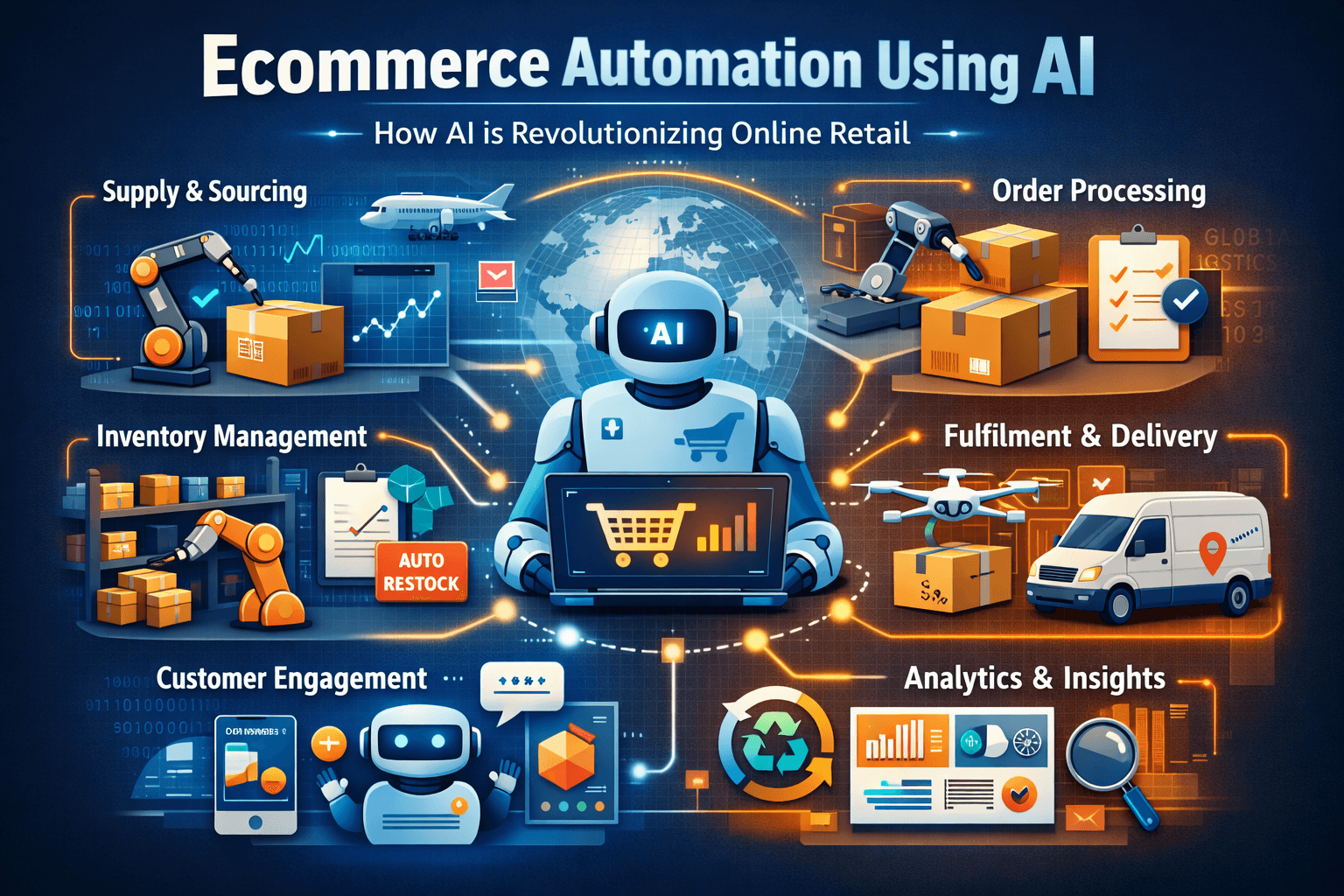How Augmented Reality Retail Shopping Is Changing Fashion?
E-commerce Trends: Smart & Sustainable


TL;DR
E-commerce in 2025 is being shaped by innovation and responsibility, with sustainability emerging as the leading force. Consumers now expect eco-friendly practices like carbon-neutral shipping and transparent supply chains, while also embracing AI-powered personalization, AR try-ons, and social commerce. Platforms like Glance AI make shopping smarter by recommending sustainable pieces that fit your style and wardrobe. Retailers are responding with greener packaging, secondhand platforms, and flexible payment options that align with conscious lifestyles. Shopping is no longer just about convenience—it’s about making choices that reflect values, reduce impact, and build trust. In this new era, sustainable shopping isn’t a passing trend—it’s the future of modern retail.
Shopping is no longer just about style or convenience—it's a reflection of personal values, environmental responsibility, and digital innovation. As we move deeper into 2025, e-commerce trends are clearly pointing toward one dominant direction: sustainability, powered by innovation.
According to JPMorgan’s 2024 Global E-commerce Trends report, online retail is expected to grow by over 10% CAGR, with sustainability as a core driver of consumer decision-making. BigCommerce also highlights that 73% of consumers now expect brands to adopt sustainable practices—a statistic that indicates this isn’t a passing fad but a transformative movement.
So, what exactly are the emerging e-commerce trends fueling this green wave? And how can you align your shopping habits with them? Let’s break it down.
What Are E-commerce Trends?
E-commerce trends are dynamic patterns influenced by tech innovations, consumer demands, and shifting global priorities. From AI-driven personalization to circular fashion models, these trends shape how businesses operate and how shoppers engage with products.
In 2025, e-commerce is about tech-meets-values—innovation with a conscience. Let’s explore the top e-commerce trends making waves this year.
Top E-commerce Trends in 2025
1. Sustainable Shopping Models
Sustainability is now a major e-commerce vertical, not just a subcategory. Consumers are actively choosing eco-friendly, ethically produced goods. According to Digital Commerce 360, 66% of Gen Z shoppers say they prioritize sustainable materials when buying fashion online.
Brands are responding with:
- Transparent supply chains
- Carbon-neutral shipping
- Packaging alternatives (e.g., compostable mailers)
- “Pre-loved” or refurbished product categories
2. AI-Powered Personalization
Advanced algorithms now track everything from browsing habits to mood signals, offering smart product suggestions. Tools like Glance AI, Shopify Magic, and Salesforce Commerce Cloud are leading the personalization frontier.
McKinsey reports that AI-driven personalization can increase conversion rates by up to 40%—a significant evolution in e-commerce trends.
3. Voice-Enabled Shopping
Smart speakers and voice assistants (Alexa, Siri, Google Assistant) are becoming default shopping channels. With over 8.4 billion voice-enabled devices in use globally, optimizing for voice search is a critical SEO and UX factor.
4. Augmented Reality (AR) Try-Ons
AR is now standard in top-tier online retail. Fashion, home décor, and even grocery brands allow customers to visualize products before buying.
- Example: IKEA Place, Warby Parker, and Sephora Virtual Artist.
5. Social Commerce Expansion
TikTok Shop, Instagram Checkout, and YouTube Storefronts are reshaping impulse buying. Digital Commerce 360 notes that sales via social platforms grew 70.7% YoY in 2024 alone, making social commerce one of the fastest-growing e-commerce trends.
6. Flexible Payment Systems
From Buy Now, Pay Later (BNPL) to crypto integration, consumers now demand payment flexibility. Klarna, Afterpay, and Coinbase Commerce are leading innovation in this space.

Sustainable Shopping: The Trend That’s Becoming a Norm
So, what makes sustainable shopping stand out in this fast-evolving digital world?
Sustainable shopping involves choosing products that reduce environmental impact, support fair labor, and promote conscious consumption. It’s not just about what you buy—it’s about how, why, and where you buy.
Why It Matters:
- Environmental Impact:
- The fashion industry alone is responsible for 10% of global carbon emissions (UNEP).
- Choosing eco-friendly products helps lower your carbon footprint through sustainable e-commerce practices.
- Ethical Labor Practices:
- Many sustainable brands invest in fair wages, safe working conditions, and local artisanship—integral to evolving e-commerce trends in ethical sourcing.
- Long-Term Value:
- Sustainable products often last longer, reducing waste and the need for frequent replacements, which aligns with the long-term goals of responsible e-commerce.
- Consumer Power:
- When you shop sustainably, you vote with your wallet. It sends a message to brands to produce better—a clear influence on the direction of e-commerce trends.
Practical Ways to Shop Sustainably in 2025

1. Choose Eco-Certified Brands
Look for certifications like:
- GOTS (Global Organic Textile Standard)
- Fair Trade
- OEKO-TEX®
These certifications are increasingly being featured in cutting-edge e-commerce platforms focused on transparency.
2. Follow the 30-Wear Rule
If you can’t see yourself wearing it at least 30 times, skip it. Platforms like Glance AI even let you preview how items fit into your wardrobe digitally—an example of tech-driven e-commerce trends enhancing sustainability.
3. Try the 5-Outfit Test
Ensure each item works in at least five outfits. This promotes versatility and reduces wardrobe clutter—ideal for sustainable e-commerce strategies.
4. Buy Secondhand and Vintage
Apps like thredUP, Poshmark, and Depop are booming with one-of-a-kind finds that reduce landfill load. These are now central to e-commerce trends favoring circular economies.
5. Recycle and Upcycle
Brands like H&M, Patagonia, and Levi’s offer take-back programs or even upcycled collections, making recycling a functional part of sustainable e-commerce.
6. Plan, Don’t Panic-Buy
Create a shopping wishlist. Avoid algorithm-driven impulse purchases and instead, buy with intention—one of the more mindful shifts in today’s e-commerce trends.
What Data Tells Us About the Sustainable Shopping Movement
Recent market research underscores the accelerating influence of sustainability in consumer behavior and e-commerce performance:
- According to the Harvard Business Review, products marketed as sustainable accounted for 18.5% of all retail offerings yet drove over 50% of the category growth between 2017 and 2022—demonstrating their outsized impact on sales trajectories.
- The Statista forecast for the sustainable fashion market estimates it will reach a valuation of $15 billion by 2030, highlighting significant growth potential in ethical fashion consumption.
- In alignment with these trends, BigCommerce reports that 85% of global consumers have modified their purchasing behaviors in favor of more sustainable products over the last five years.
Major retail players are also responding to this trend. Brands like Amazon, Zara, and Target have committed to carbon neutrality initiatives, signaling a significant pivot in mainstream operations toward eco-conscious e-commerce models.
Why Eco-Friendly Shopping Is the Future of Retail

Eco-friendly shopping represents:
- Innovation (through smart supply chains and green tech)
- Inclusivity (as ethical brands empower global communities)
- Longevity (products that last, brands that build trust)
- Profitability (ethical brands are outperforming competitors in consumer trust metrics)
Sustainability isn’t a nice-to-have; it’s a business imperative.
Wrap up
In 2025, shopping smart means shopping sustainably. From AR try-ons to blockchain-backed authenticity, innovation is paving the way for eco-conscious consumption. For consumers, this means aligning purchases with values. For retailers, it’s a chance to lead the charge toward a better world.
Whether you're upgrading your wardrobe or switching your go-to brands, remember: sustainable shopping isn’t just an e-commerce trend—it’s the blueprint of modern retail.
FAQs
- Is sustainable fashion a trend?
Sustainable fashion isn’t just a trend; it’s a long-term industry shift. Brands and shoppers are moving toward materials, production methods, and buying habits that reduce environmental impact and improve labor conditions. While certain styles within sustainable fashion may trend—like thrifting or upcycled clothing—the overall movement is reshaping how clothing is designed, produced, and reused. It’s becoming a core part of fashion’s future rather than a passing moment. - When did sustainability become a retail priority?
Sustainability began moving into the retail spotlight in the late 1980s after the Brundtland Report introduced the modern idea of “sustainable development.” Throughout the 2000s and early 2010s, it shifted from a niche concern to a mainstream business priority as climate awareness grew, governments introduced new environmental rules, and shoppers started asking tougher questions about how products were made. By the late 2010s, especially around 2018, data showed that most younger consumers were willing to pay more for sustainable options, locking sustainability in as a core part of retail strategy rather than an optional add-on. - Why is sustainability the future of e-commerce?
Sustainability is shaping the future of ecommerce because consumers now expect responsible choices, regulators are pushing greener standards, and brands see long term value in reducing waste and improving efficiency. It strengthens loyalty and keeps businesses competitive.






